Does your corporate strategy include a caring culture? If not, you may want to reconsider.
Without a caring environment, repercussions to the business can be huge. And on the flip side, if employees do feel cared for, the upside for the organization can be just as large, according to survey results released today in MetLife’s 21st annual U.S. Employee Benefit Trends Study.
For example, the study finds that when employers show care, 87% of employees are engaged, 90% are productive and 89% are loyal. But if they don’t feel that employers care, the figures drop dramatically: engagement (45%), productivity (58%) and loyalty (54%), according to the survey of more than 2,800 full-time employees and another 2,800 employers across the nation.
“What ultimately makes care so important is the impact it has across every aspect of the workplace,” says Missy Plohr-Memming, senior vice president, national account sales and group benefits at MetLife. “What we uncovered in this year’s report is that by genuinely demonstrating care, employers can improve workers’ holistic health, which in turn drives more positive outcomes for both employees and their organizations.”
What exactly does care mean for employees?
The concept of care in our personal lives is apparent—but what does it look like in the workplace?
“Care refers to employers genuinely demonstrating an interest in employees’ overall wellbeing. It builds from a foundation of fair compensation and a safe work environment to incorporate a sense among employees that the organization recognizes their contributions and acknowledges their unique needs as individuals,” says Plohr-Memming, who spoke at HRE‘s Health and Benefits Leadership Conference last year on the topic of social health for workers.
Care can include benefits, such as healthcare and wellness offerings, flexible schedules, lunches with the team and managers, professional growth and training, and purposeful work.
But there are other intangible ways that employees feel care from their employer. Treating the workforce with respect, creating a safe environment, recognizing when an employee is stressed and offering support are just some of the examples employees cited in the survey.
And how are employers doing in delivering care across the employee experience landscape?
Not particularly well. Overall, job satisfaction stood at 69% this year, just a few points better than last year’s 66%, which was the lowest it’s been in the past two decades that MetLife has conducted its Employee Benefit Trends Study.
Additionally, only 61% of employees felt their employer offered a range of benefits that met their needs and those of their household, down from 63% in 2022.
In particular, financial concerns ballooned this year, with 48% of employees saying their finances lowered their mental health, compared with 31% last year, according to the survey.
However, across the board on holistic health—financial, mental, physical and social health—employers think employees’ wellbeing is doing far better than it really is.
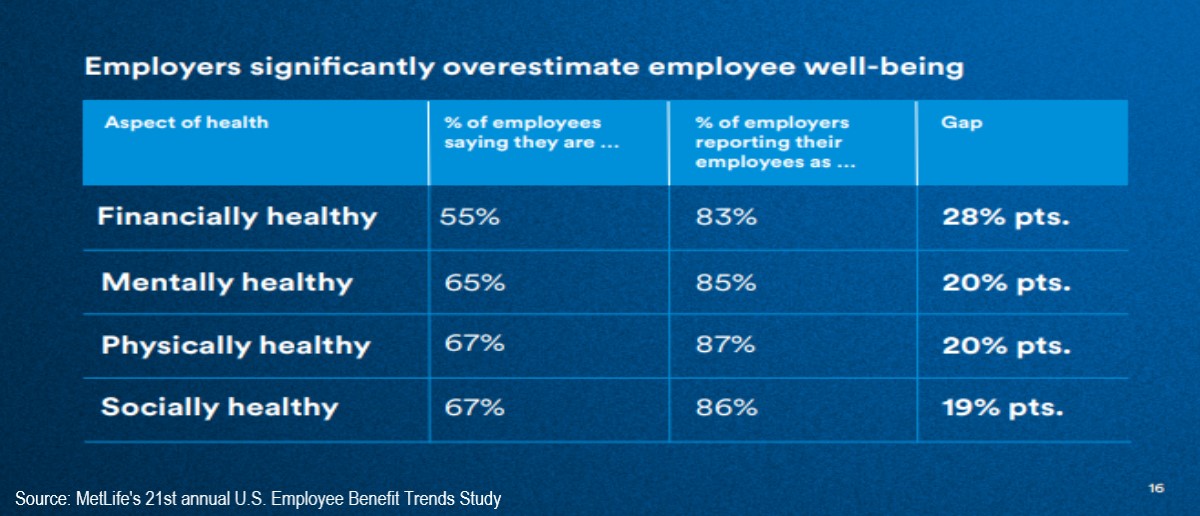
Financial health was the largest contributor to the overall decline in holistic health, according to the study. It also turns out that employee stress and burnout are both higher now than pre-pandemic, the report finds.
5 steps to unlock holistic health and happiness
The survey found a connection between employee health and caring employers. For example, 80% of employees who feel cared for at work describe themselves as holistically healthy compared with 40% who feel an absence of care from their employer. And what percentage of employees overall feel cared for when working? Slightly more than half (58%).
Plohr-Memming suggests that employers can reverse the declines in holistic health by demonstrating they care using these five strategies:
1. Professional growth and training
Learning and development are key drivers of employee care. The study notes L&D is shifting from a focus on hard skills to soft skills like building mentoring relationships and coaching colleagues. Leaders should also show they care by listening to employees’ feedback and acting on it.
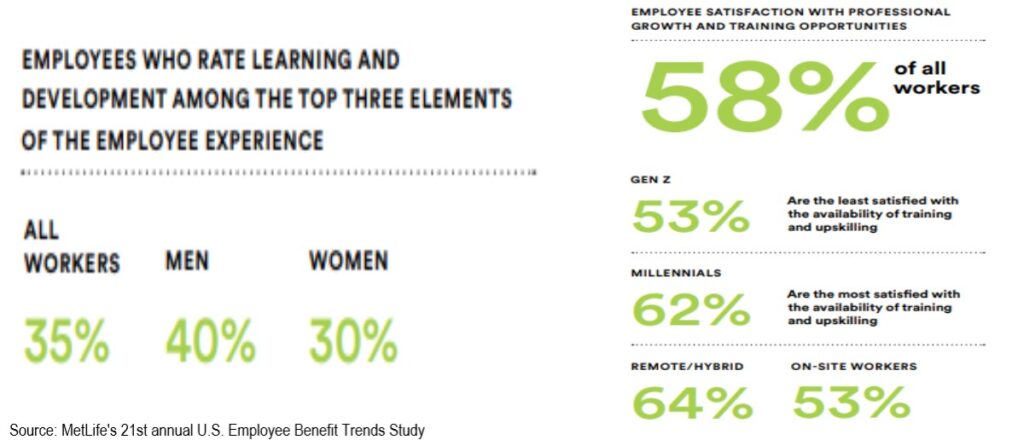
2. Purposeful work
Employees are increasingly seeking meaning, or purpose, in their work and want their companies to care enough to make that happen. Show care by providing resources to support employees looking to connect with purpose.
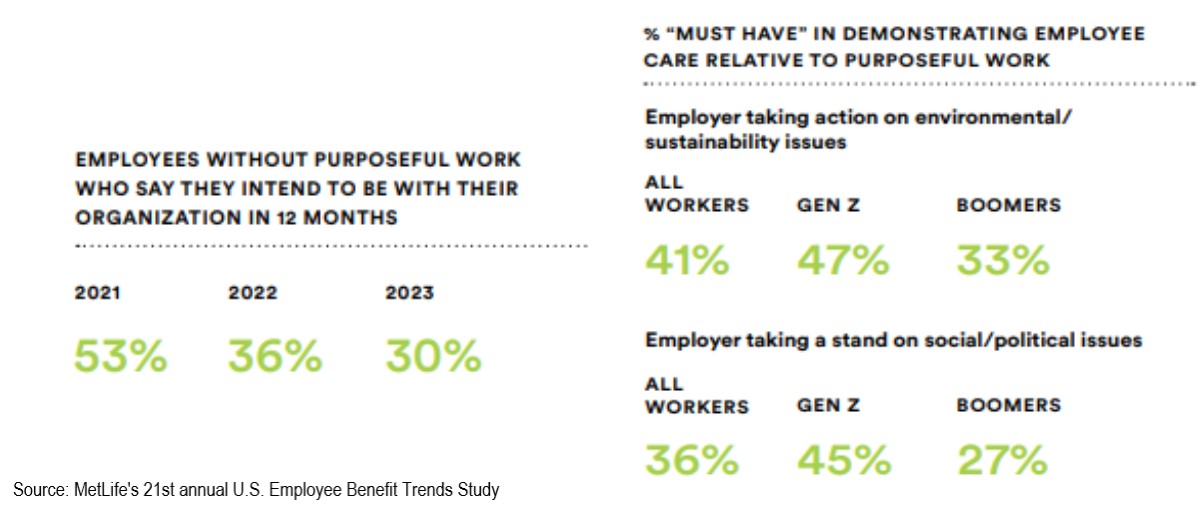
3. Social and supportive culture
Social and supportive cultures encompass inclusive, as well as safe and comfortable, environments. This can be achieved through defining cultural norms and behaviors using open communication and also dedicating resources and attention to creating a more supportive culture.
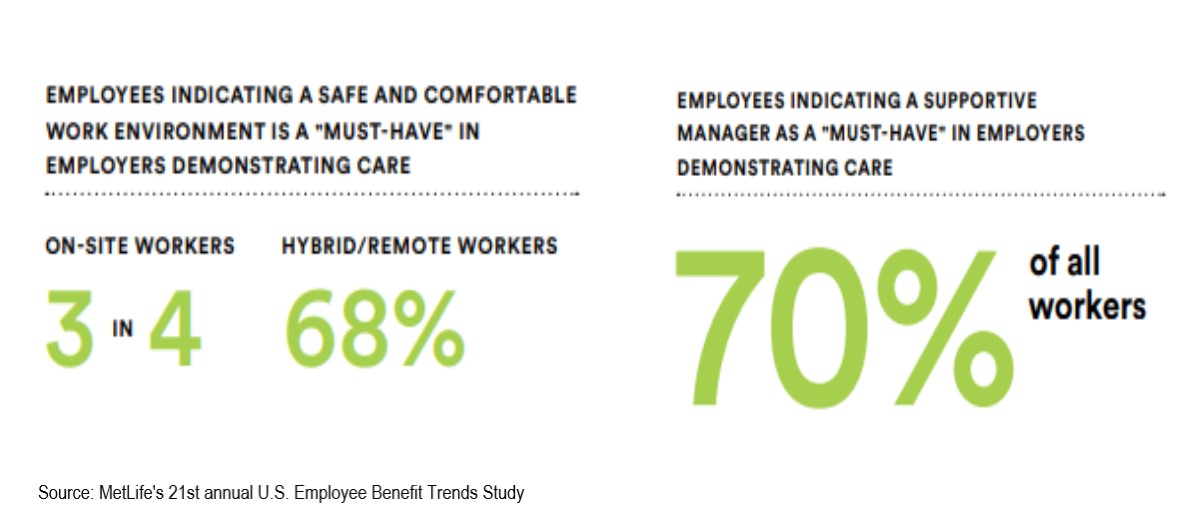
4. Flexibility and work/life balance
Focus on flexibility in work schedules, reevaluate PTO policies and consider the amount of time that employees can dedicate to commitments outside of work. Determine what matters most from expectations and priorities.
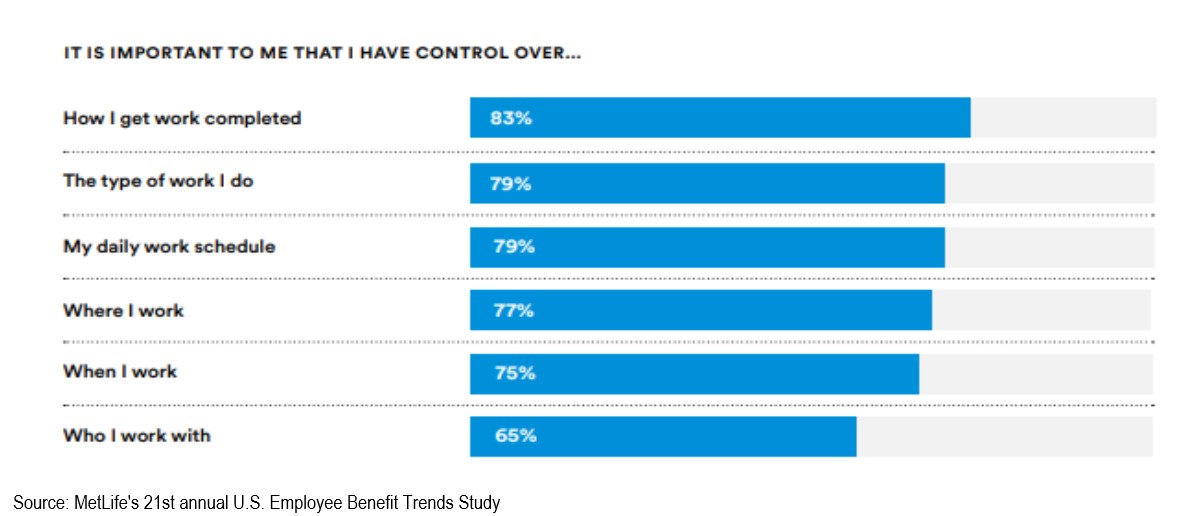
5. Wellness programs and benefits
Employees want personalized care when it comes to their benefits and wellness programs. This entails providing more options and flexibility to choose the specific benefits that are the most valuable to them and their family. Additionally, to care for employees, especially those who are facing financial stress, consider making benefits more affordable.
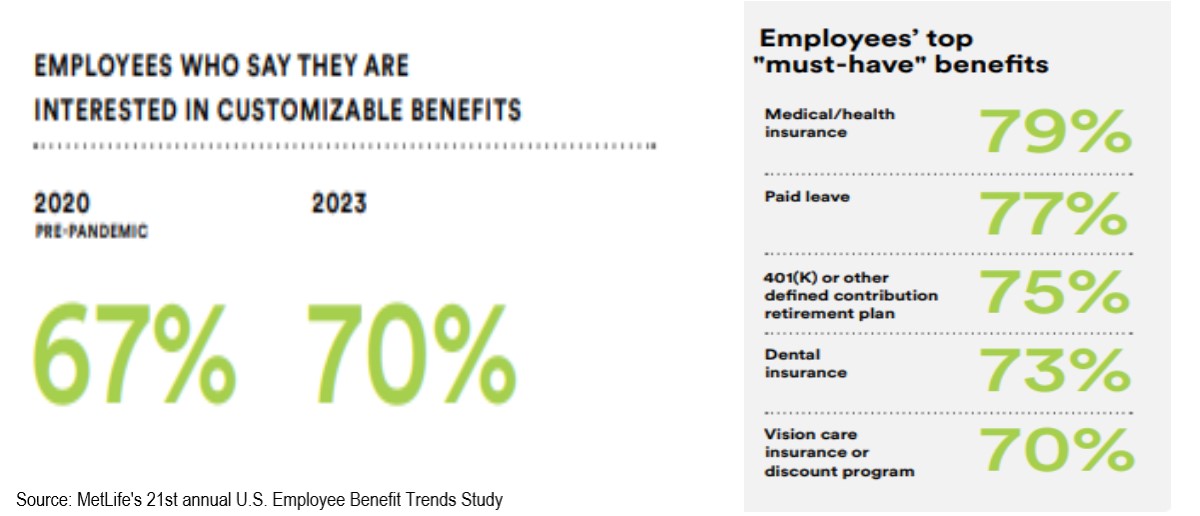
“To really get care right, employers must ensure they are not only prioritizing the demonstration of care generally but also offering solutions that reflect the varying needs of all their employees, ensuring they feel truly seen as individuals,” Plohr-Memming says. “This means not applying a one-size-fits-all approach, but rather demonstrating care in a way that specifically meets employees’ individual needs.”

